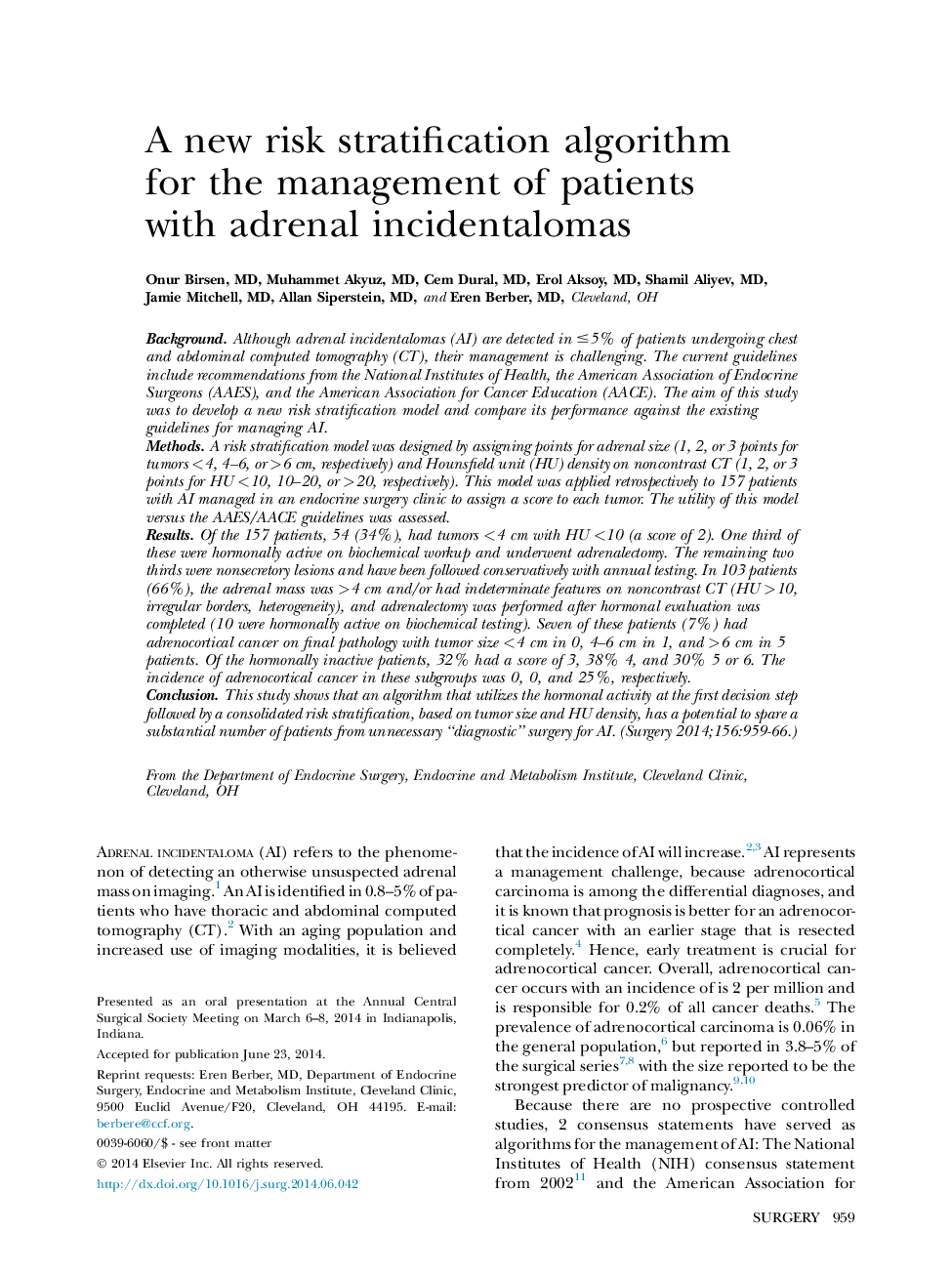| کد مقاله | کد نشریه | سال انتشار | مقاله انگلیسی | نسخه تمام متن |
|---|---|---|---|---|
| 4307651 | 1289253 | 2014 | 8 صفحه PDF | دانلود رایگان |
BackgroundAlthough adrenal incidentalomas (AI) are detected in ≤5% of patients undergoing chest and abdominal computed tomography (CT), their management is challenging. The current guidelines include recommendations from the National Institutes of Health, the American Association of Endocrine Surgeons (AAES), and the American Association for Cancer Education (AACE). The aim of this study was to develop a new risk stratification model and compare its performance against the existing guidelines for managing AI.MethodsA risk stratification model was designed by assigning points for adrenal size (1, 2, or 3 points for tumors <4, 4–6, or >6 cm, respectively) and Hounsfield unit (HU) density on noncontrast CT (1, 2, or 3 points for HU <10, 10–20, or >20, respectively). This model was applied retrospectively to 157 patients with AI managed in an endocrine surgery clinic to assign a score to each tumor. The utility of this model versus the AAES/AACE guidelines was assessed.ResultsOf the 157 patients, 54 (34%), had tumors <4 cm with HU <10 (a score of 2). One third of these were hormonally active on biochemical workup and underwent adrenalectomy. The remaining two thirds were nonsecretory lesions and have been followed conservatively with annual testing. In 103 patients (66%), the adrenal mass was >4 cm and/or had indeterminate features on noncontrast CT (HU >10, irregular borders, heterogeneity), and adrenalectomy was performed after hormonal evaluation was completed (10 were hormonally active on biochemical testing). Seven of these patients (7%) had adrenocortical cancer on final pathology with tumor size <4 cm in 0, 4–6 cm in 1, and >6 cm in 5 patients. Of the hormonally inactive patients, 32% had a score of 3, 38% 4, and 30% 5 or 6. The incidence of adrenocortical cancer in these subgroups was 0, 0, and 25%, respectively.ConclusionThis study shows that an algorithm that utilizes the hormonal activity at the first decision step followed by a consolidated risk stratification, based on tumor size and HU density, has a potential to spare a substantial number of patients from unnecessary “diagnostic” surgery for AI.
Journal: Surgery - Volume 156, Issue 4, October 2014, Pages 959–966
